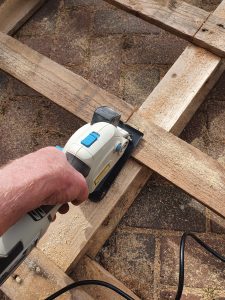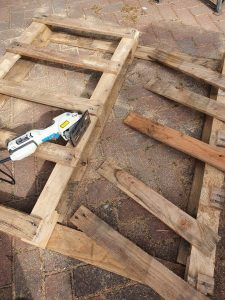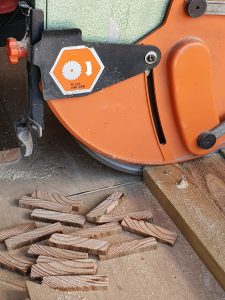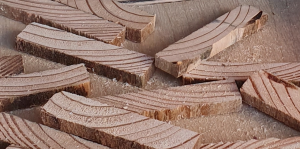The Pallet
At the core of the hull construction is the humble pallet, found almost everywhere we rarely concern ourselves to what happens to them after that delivery.
Selecting the right pallet is essential, pallets that have split boards are usually too dry or conversely if they are black or mouldy are to damp, you are looking for pallet boards with a moisture content of between 10% & 15% follow the link here to find out more.
The pallet of choice conforms to the EUR/EP AL-pallet standard 1,200 mm × 800 mm × 144 mm (47.2 in × 31.5 in × 5.7 in); it is a four-way pallet made of wood that is nailed with 78 special nails in a prescribed pattern. The weight of a EUR/EPAL-Pallett (EPAL 1) is approx. 25 kg. The Safe working load of a EUR/EPAL-pallet is 1,500kg.

With the working weight of a single EUR/EPAL pallet approaching the total displacement weight of the Class Xero the humble pallet became a natural donner partner for the core and frame material.
With some 78 nails to remove often rusted in a quick method of disassembly is needed this comes by way of a 3″ bladed handled circular saw, with the blade set at a cutting depth equal to the thickness of the wooden slats a pallet, enabling a pallet to be disassembled in under 5 minutes.


With the pallet materials converted back to the sawn lengths of wood, the next step is the conversion into 8mm wide core material. this is achieved using a radial saw, where the material is cut across the grain where a typical EUR/EPAL pallet will donate around 0.5 to 0.75 m square metres of the core material after processing.


Video 1/3rd cutting speed
The end result is 8mm thick core baskets with the grain exposed ready to infuse with the Bio-resin during the lamination process.


